Team Members
- Hanna Berger
- Anna Boyd
- Melissa Gibney
Mentors
DiPassio, Heilemann, Phinney, Smith
Project Description
The Beat Buddy 3000 is a robotic drum machine capable of actuating a live drum set. Users can compose patterns in real-time using the sequencer-style interface as well as by selecting from a list of predefined drum patterns. This instrument is equipped with pause, play, reset, and mute commands, and features global tempo and local MIDI velocity controls. The Beat Buddy 3000 is designed to stand in for a human drummer in live settings, to be user-friendly, intuitive, easy to set up and tear down, and to be more affordable than similar products on the market.
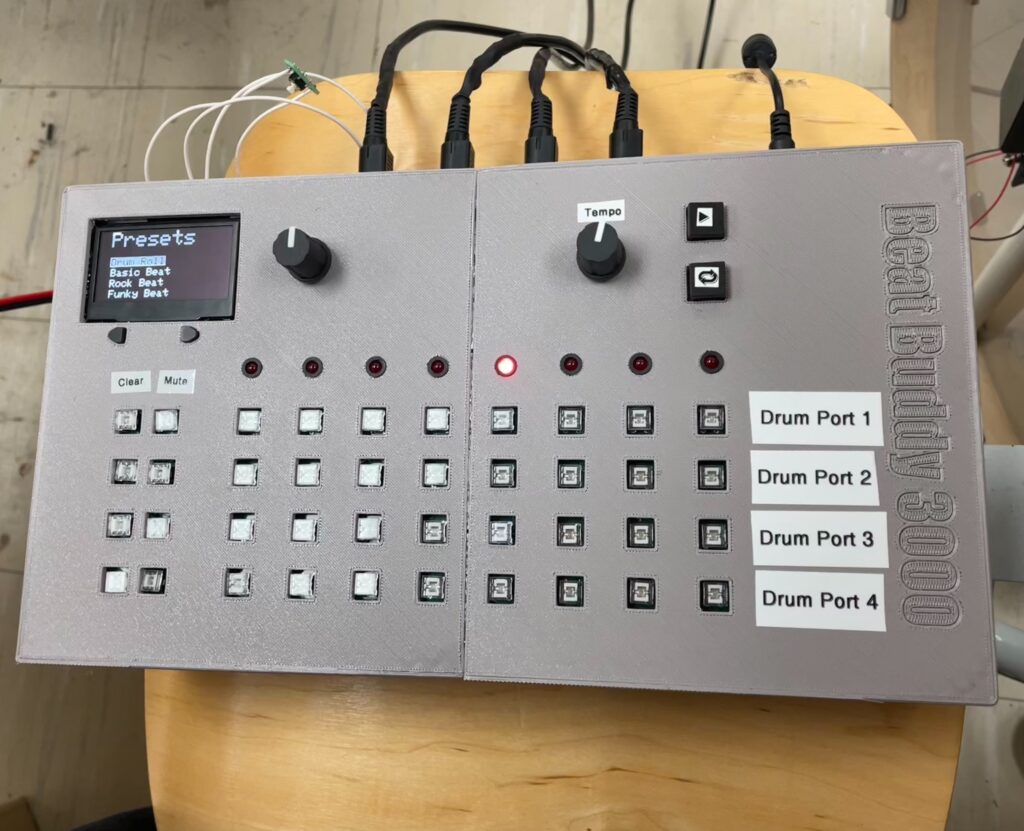
Method of Actuation
Each drum is directly actuated by a small solenoid. When a voltage is applied to the solenoid, the rod inside extends. When the voltage is removed, the rod retracts. When placed just above the drum head, the solenoid strikes the drum.
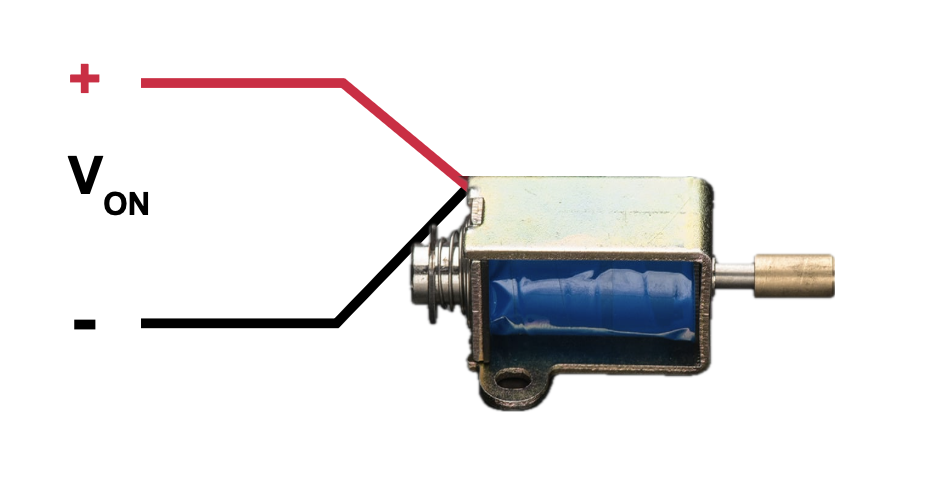
Drum Attachments
Cymbal Attachment
The unit attaches to the cymbal stand using a metal clamp. The attachment arm can be extended or retracted to accommodate cymbals of various diameters.
Shell Attachment (Snare and Tom)
The shell attachment can be used on upright drums such as the snare and toms. Three points of contact provide stability, and the telescoping arms with spring returns fit any standard drum. There are custom solenoid clips that snap to the attachment arm.
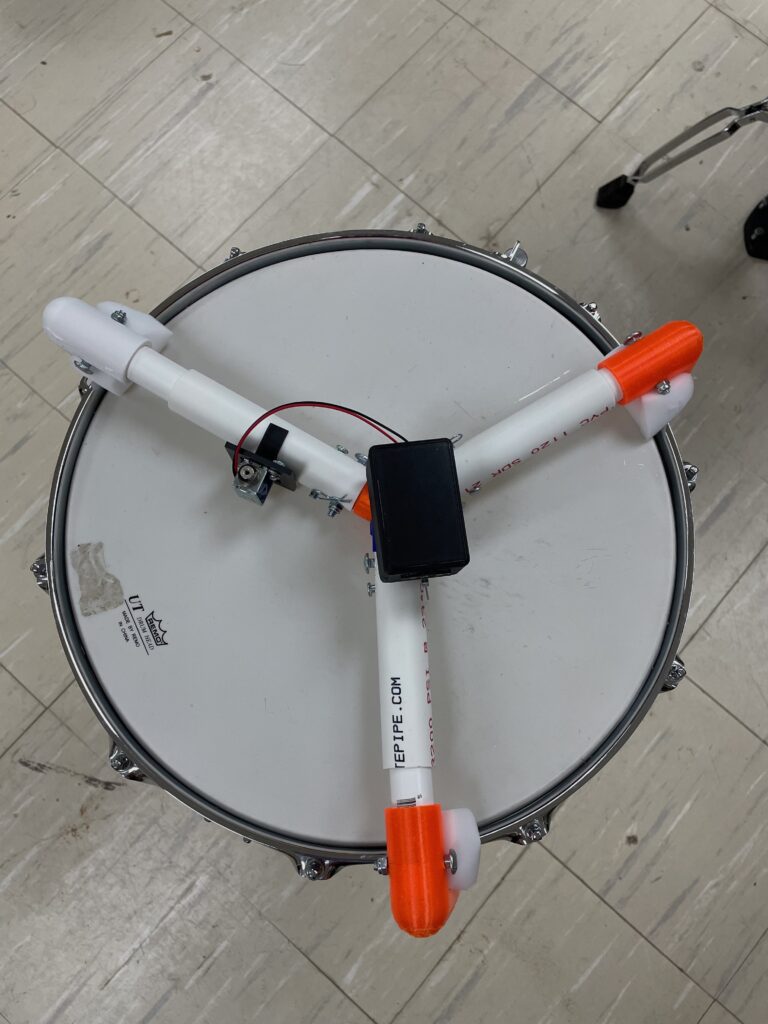
Kick Attachment
This mechanism is similar to the shell attachment, but it has two points of contact rather than three. The custom solenoid clips are also used with the kick attachment.
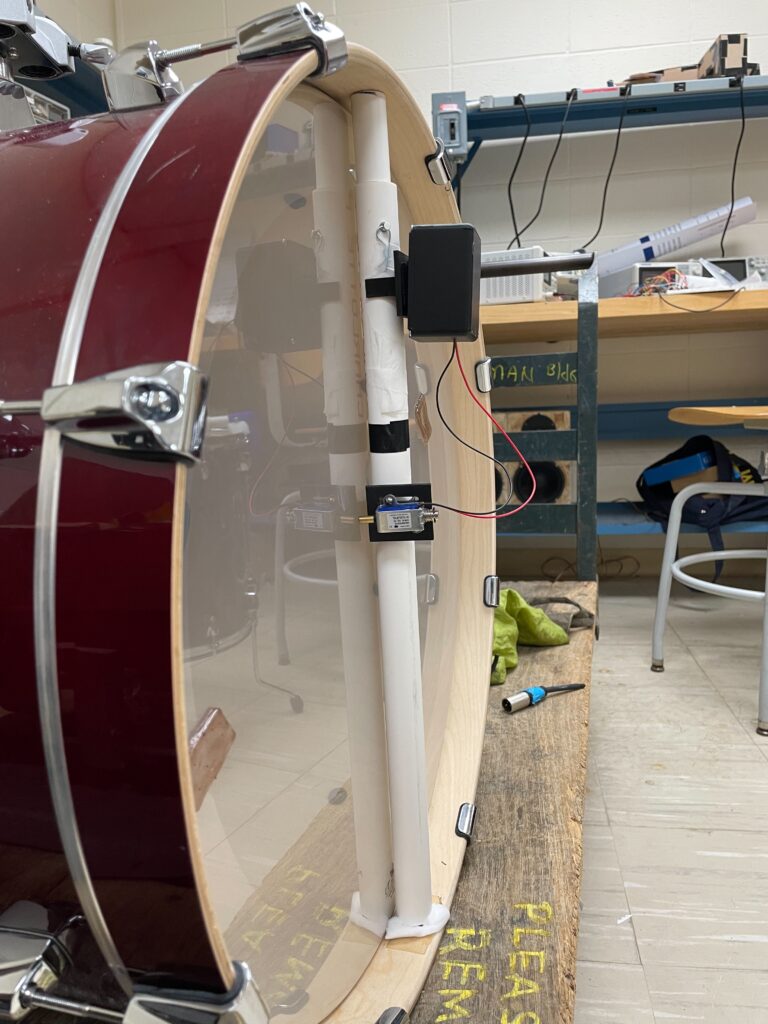
Solenoid Clips
The solenoids are attached to the shells using custom 3D printed clips. These clips snap to the PVC pipe arms and can slide and rotate to whichever position the user desires.
Driver Board Enclosures
These enclosures hold circuit boards used to actuate the solenoids. The enclosures are attached to clips using velcro, and they are modeled in Autodesk Fusion 360.
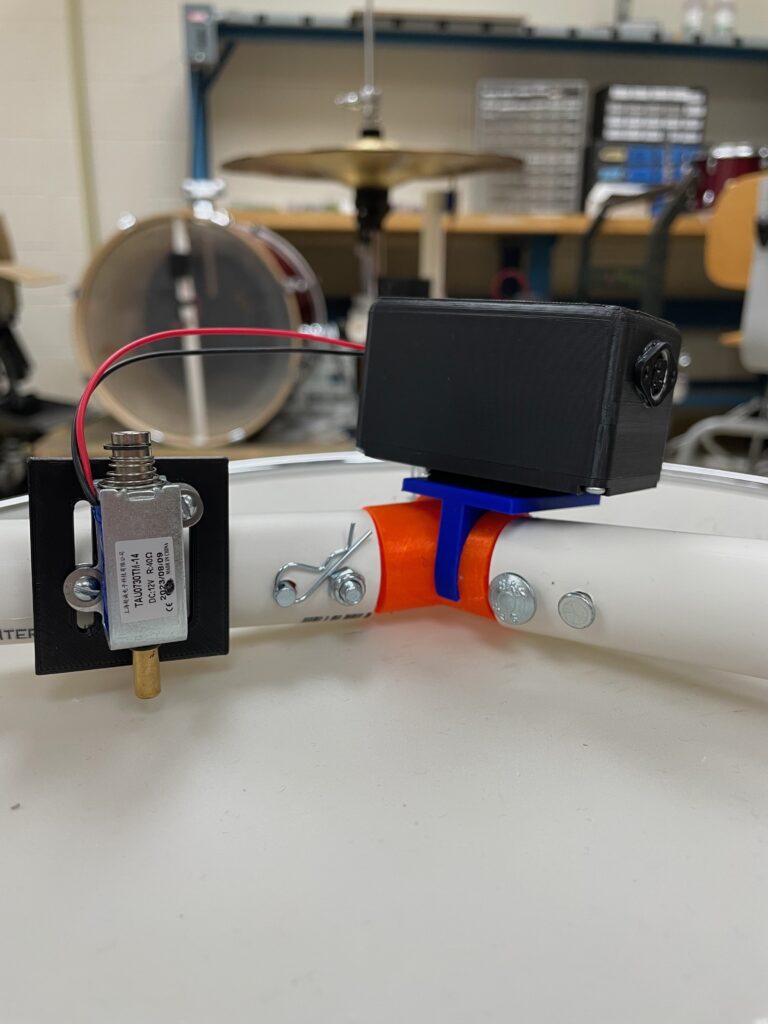
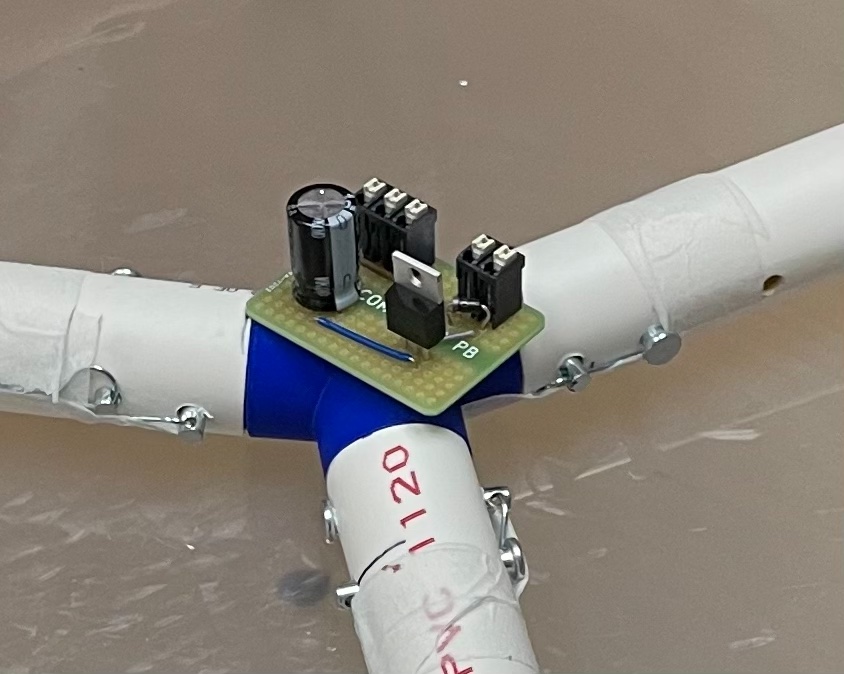
System Block Diagram
This is a block diagram of the internal workings of the interface. The Arduino Mega sends signals to the solenoid drivers based on what is entered using the sequencer matrix. Feedback to the user is displayed using the LED beat indicator, the OLED display, and the illuminated sequencer matrix buttons. The user can adjust the tempo and velocity of the beats using the additional controls. I2C protocol is used for communication between the Arduino Mega, the sequencer matrix, and the OLED display.
MIDI Velocity
By varying the voltage across each solenoid, the Beat Buddy 3000 generates a range of hit strengths in which a larger voltage creates a faster and louder strike. Regardless of how quickly each solenoid actuates, all units are kept in time with each other and make contact with their respective drums on the beat. They are then briefly held against the drum before being released to replicate the articulation of a human drummer.
Diagram of Interface Features
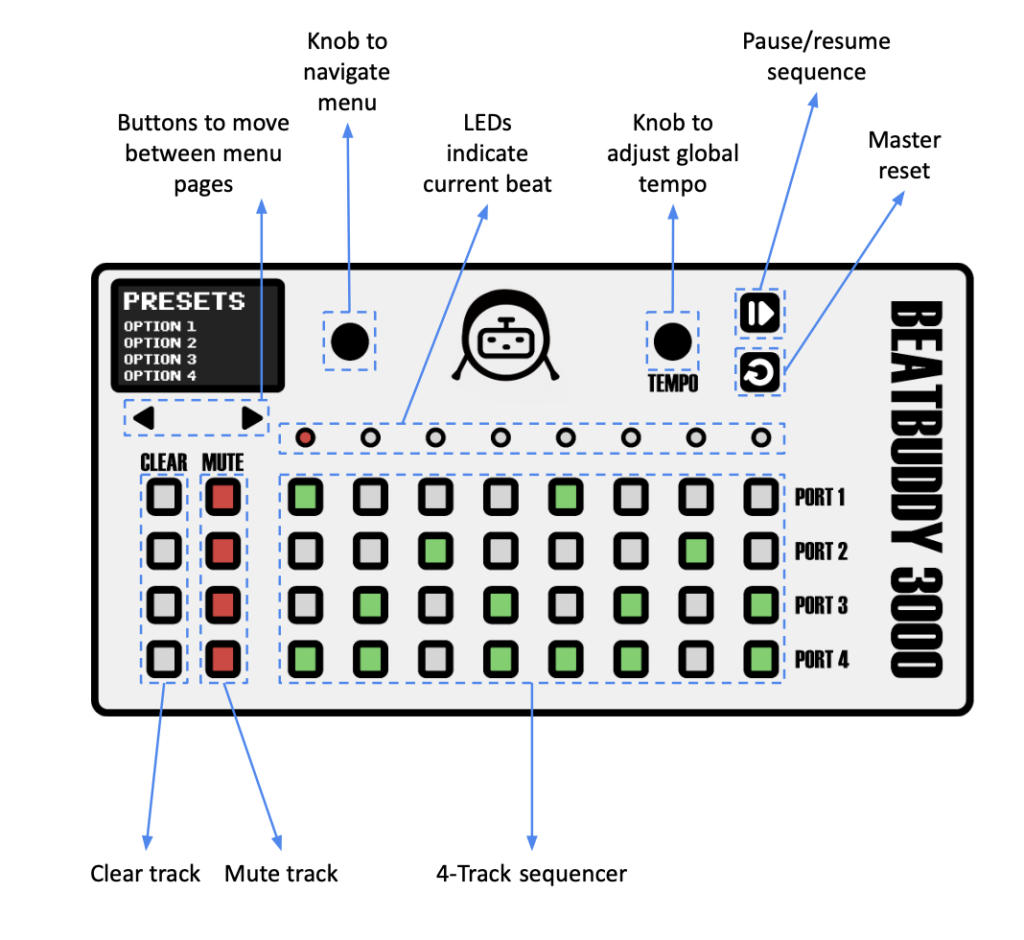
3D Model of Interface:
This enclosure holds the controls and displays of the Beat Buddy 3000. This model was split into four pieces for printing purposes, and standoffs were added to mount the components inside the enclosure. The model was created in Autodesk Fusion 360.
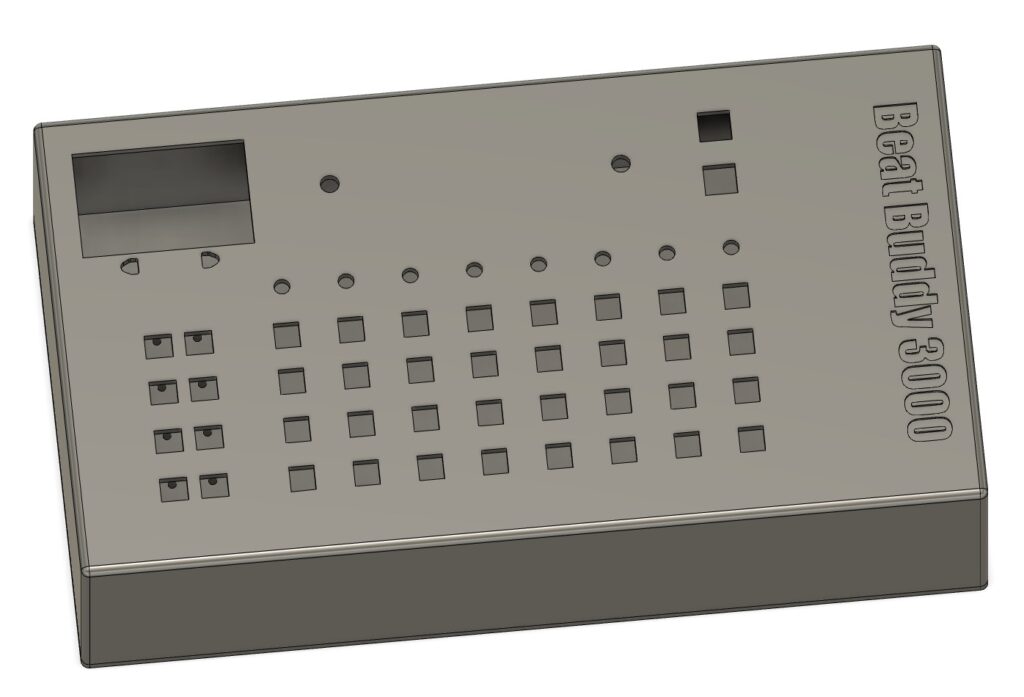
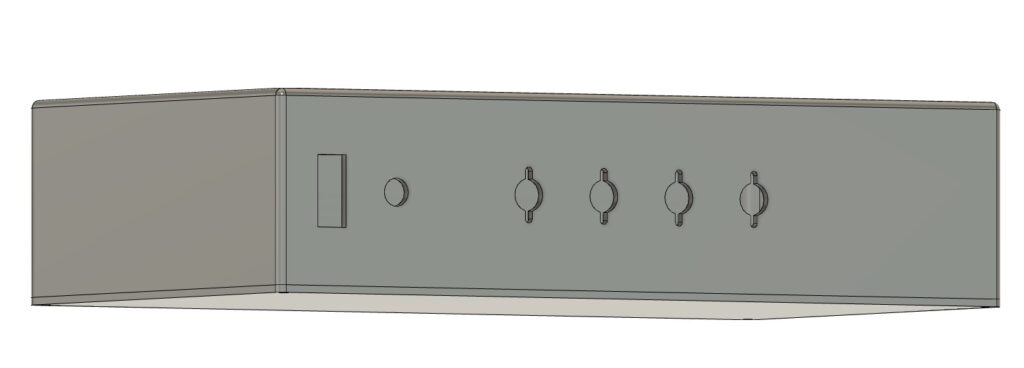
Sequencer
Users can control the Beat Buddy 3000 through the sequencer interface. Each track on the interface maps to a single drum. Each of these tracks has 8 steps, representing 2 beats with 16th note subdivisions. The sequencer’s LED buttons can be pressed to program which drums play on which beats. For instance, the sequencer as pictured in Diagram of Interface Features will generate the pattern below.
